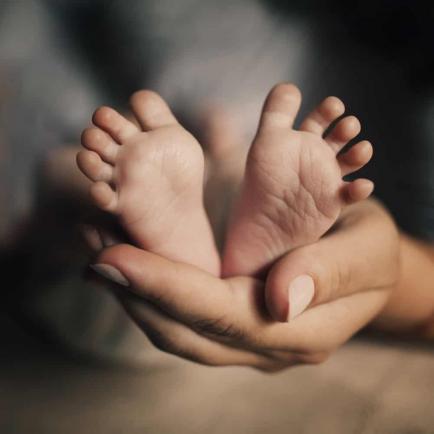
Your newborn baby is cute, for sure, but it doesn't seem like there is much going on in there. The baby eats. The baby cries. The baby fills diapers. The baby sleeps. However, your baby is quite intelligent for one who is such a novice at life. If he or she could talk, this is what you might hear.
I know my mommy
The little bundle the nurses handed you in the hospital couldn't say, "Hello, Mommy," but your baby knew exactly who you were all the same. In utero, an infant can hear his or her mother's voice, so by birth, babies can distinguish between their moms' voices and others' voices. Research also indicates that fetuses learn to recognize their mothers' smells during the last trimester of the pregnancy.
If you are trying to convince a newborn to sleep, this information can come in handy. Try placing something that smells like mom in the crib (a pillow case or a shirt) or playing a recording of her voice in the nursery.
My eyesight is not so great
At birth, a baby's eyesight is around 20/600. In layman's terms, this means a newborn can see an object 20 feet away as well as the average person can see the object from 600 feet away. At around six months of age, though, children's eyesight has improved to average adult levels.
Faces are my favorite
Research indicates that babies can recognize a human face at birth. In fact, they prefer faces to other stimuli. Keep this in mind when purchasing baby gear; for the first month or so, your baby's favorite toy will probably be you.
After faces, babies prefer high contrast patterns. They can't distinguish between colors, so black and white checkerboard-type patterns will draw the most attention at first. My dad was especially proud that his blue and white plaid shirt caught his 2-week-old grandbaby's attention. Day by day, you will notice your baby's eyes as he or she focuses on more and different kinds of objects and patterns.
I'm not tearing up
Your newborn may arch his or her back and wail when hungry, but you won't see any tears. While your baby does have tear ducts, they can only produce enough liquid to protect the eyes. Tears will begin to show up at around 3 months of age.
I have more bones than you do
At birth, humans have 270 bones. Over time, the bones in the skull and the spine fuse together, so adults have 206 bones. Scientists believe that having more separated bones (as well as a lot of cartilage in the skeleton) helps babies get through the birthing process unscathed.
Your newborn is a cuddly bundle of amazing intelligence and physical wonder. Now, just try to remember that at 3 a.m. tonight.

